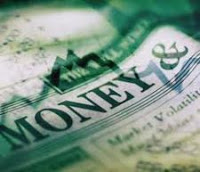Devaluation means officially lowering the value of currency in terms of foreign currencies. Devaluation is the result of official government action.There could be many motives of the devaluation. It stimulates exports of commodities. It restricts import demand for goods and services. It helps in creating a favourable balance of payments. Almost all the countries of the world have devalued their currencies at one time or the other with a view to achieving certain economic objectives. During the great depression of 1930 devaluation was carried by most countries of the world for the objecting of correcting over-valuation of currencies.
Devaluation of Indian Rupee in 1966
Despite government attempts to obtain a positive trade balance, India suffered a severe balance of payments deficits since the 1950s. Inflation had caused Indian prices to become much higher than world prices at the pre-devaluation exchange rate.When the exchange rate is fixed and a country experiences high inflation relative to other countries, that country’s goods become more expensive and foreign goods become cheaper. Therefore, inflation
tends to increase imports and decrease exports. Since 1950, India ran continued trade deficits that increased in magnitude in the 1960s. Another additional factors which played a role in the 1966 devaluation was India’s war with Pakistan in late 1965. The US and other countries friendly towards Pakistan, withdrew foreign aid to India, which further necessitated devaluation. Because of all these reasons, Government of India devalued Rupee by 36.5% against Doller.
Devaluation of Indian Rupee in 1991
In 1991, India still had a fixed exchange rate system, where the rupee was pegged to the value of a basket of currencies of major trading partners. At the end of 1990, the Government of India found itself in serious economic trouble. The government was close to default and its foreign exchange reserves had dried up to the point that India could barely finance three weeks’ worth of imports. In July of 1991 the Indian government devalued the rupee by between 18 and 19 percent. The government also changed its trade policy from its highly restrictive form to a system of freely tradable EXIM scrips which allowed exporters to import 30% of the value of their exports.
Chronology of India’s exchange rate policies
- 1947 (When India became member of IMF): Rupee tied to pound, Re 1 Rupee = 1 Pound
- 1949: Pound devalued; India maintained par with pound
- 1966: Rupee was devalued by 36.5%. At that time Rs 4.76 = $1, after devaluation it became Rs 7.50 = $1
- 1967: UK devalued pound, India did not devalue
- August 1971: Rupee pegged to gold/dollar, international financial crisis
- December, 1971: Dollar is devalued
- December, 1971: Rupee is pegged to pound sterling again
- 1971-1979: The Rupee is overvalued due to India’s policy of import substitution
- 1972: UK floats pound, India maintains fixed exchange rate with pound
- 1975: India links rupee with basket of currencies of major trading partners. Although the basket is periodically altered, the link is maintained until the 1991 devaluation.
- 1991: Rupee devalued by 18-19 %
- 1992: Dual exchange rate, LERMS, Liberalised Exchange Rate Management System
- 1993: Unified exchange rate: $1 = Rs 31.37
- 1993/1994: Rupee is made freely convertible for trading, but not for investment purposes
source : http://www.ccsindia.org/ccsindia/policy/money/studies/wp0028.pdf






0 comments: